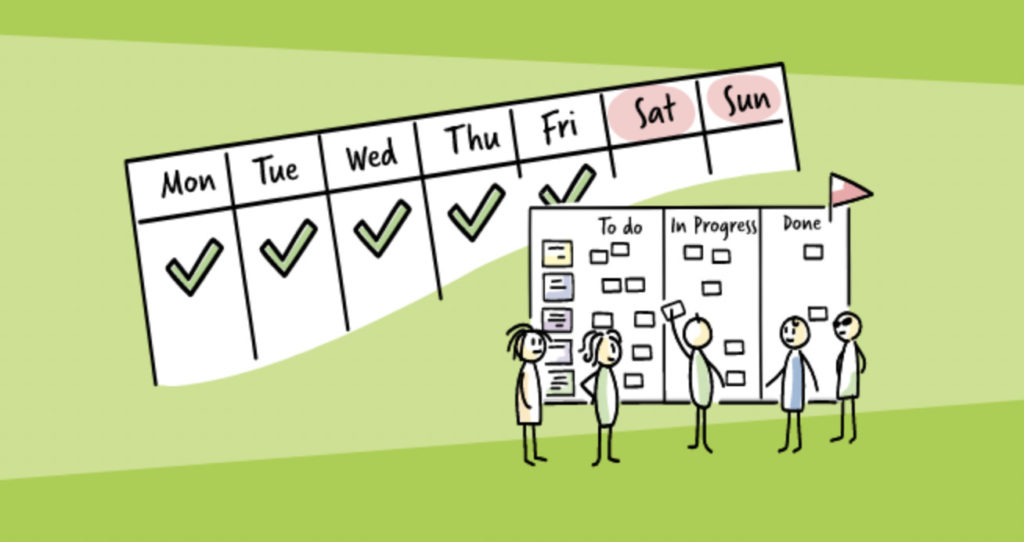The Daily Scrum meeting, also known as the Daily Stand-up meeting or Daily Huddle, may seem simple, but if not done correctly, it can impact the performance and goals of the entire team.
Overview of Daily Scrum:
The Daily Scrum is defined as a 15-minute meeting held at the beginning of each day to help team members update their work status. Along with Sprint Planning, Sprint Review, and Sprint Retrospective, the Daily Scrum is an essential ritual in the Scrum framework.
Why is Daily Scrum important?
The Daily Scrum is used to synchronize the team’s working methods on multiple aspects, allowing members to update progress and address any obstacles to complete tasks for the day. It not only focuses on achieving the Sprint goal but also encourages team members to commit to their daily tasks, fostering concentration and self-management.
Benefits of Daily Scrum:
- Facilitates knowledge sharing and transfer among team members.
- Enhances individual accountability and teamwork.
- Identifies and resolves obstacles.
- Enables faster decision-making.
Execution approach:
Depending on the working style, each team may have different adjustments when conducting the Daily Scrum. Here are the two most common approaches:
Round Robin:
Each team member takes turns answering the following three questions:
- What did you accomplish yesterday?
- What will you do today?
- Is there anything blocking your progress?
By focusing on these three questions, team members gain clarity on completed tasks, planned work, and any obstacles that require support from other team members. As a result, the Daily Scrum optimizes the ability to fulfill the tasks defined in the Sprint Backlog.
WALKING THE BOARD:

All members stand in front of the assignment board and begin updating the progress of each task card on the board. One member will take responsibility for asking about the progress of tasks and moving the cards accordingly. This will be done from the right side of the board to the left side in the following order:
- Items that can be released.
- Tasks that have been completed.
- Tasks to be completed during the day.
- Implementation method.
5 correct practices when conducting the Daily Scrum
Timing
The Daily Scrum meeting is encouraged to be held in the morning, at the start of the working day. This way, obstacles can be eliminated as early as possible. On the other hand, team members will have the remaining time of the day to focus on their work, instead of being interrupted to attend the Daily Scrum.
Correct audience
The Daily Scrum is a mandatory meeting for all members of the Development Team. Therefore, all members need to arrange their work to participate fully and on time. If working flexibly (hybrid working), the team can conduct the meeting online.
The Scrum Master and Product Owner are not required to attend the Daily Scrum. However, it is still encouraged for the Scrum Master to be present to monitor progress and support team members in resolving any obstacles.
Correct quantity
If the Sprint Planning is a meeting for planning a Sprint, then the Daily Scrum is the daily planning session within the Sprint. Corresponding to a one-week Sprint (5 working days), there will be 5 Daily Scrum meetings. No Daily Scrum meeting should be skipped for any reason. If obstacles are not detected and addressed promptly, the team will face the risk of delaying the Sprint progress.

Correct duration
It is not by chance that the Time-box of the Daily Scrum meeting is set at 15 minutes. This limited time frame forces team members to focus on the main issues, avoiding tangents or diving into details.
So what happens if there are concerns that require more in-depth discussion?
→ The relevant members will schedule a separate meeting after the Daily Scrum session to discuss and find solutions.
Correct behavior
Remember, the Daily Scrum is not a technical discussion or a place for members to debate or share detailed job viewpoints. The task is to answer the three prescribed questions – no more, no less.
5 common mistakes when conducting the Daily Scrum
Being late or violating the designated time
The maximum duration of the Daily Scrum is 15 minutes, but it can also be completed in as little as 5 minutes. Suppose the meeting starts at 9:00 AM, but you only show up at 9:05 AM? That means you missed the entire meeting!
Turning the Daily Scrum into a reporting session
Sometimes, the Daily Scrum can turn into a one-on-one report between a team member and the team leader or Scrum Master. Meanwhile, other team members are not engaged in the meeting or are working individually. This will lead to a situation where people do not have an overview of the task progress, and obstacles are not supported and resolved in a timely manner.
Scrum Master running the meeting
Originally, the Daily Scrum is a meeting that does not necessarily require the involvement of the Scrum Master. The team members play the main roles in the meeting. The Scrum Master serves as an observer and supporter, and should not turn themselves into the “main character” – the one who speaks the most during the Daily Scrum.

Members hesitate or refrain from stating their own obstacles
In the meeting, no obstacles are mentioned, even though the team’s performance is lagging or has not reached its peak. This indicates that the team culture (or even the organization) has a problem. Members feel uncomfortable sharing the difficulties and obstacles they are facing.
Updating discrete tasks
Tasks and responsibilities should be updated in their interrelated context. It should not be a mechanical process where tasks are updated sequentially from member A to member B… or only updating individual progress without highlighting whether the workload is overwhelming, progressing quickly, or lagging behind.
Conclusion:
Conducting the Daily Scrum is like regularly checking and maintaining machinery to keep it in its best operational state, even when there are no apparent breakdown signs. Although the Daily Scrum only takes 15 minutes each day, it still needs to ensure correctness, sufficiency, and regularity to keep the project under control and on track towards its goals.
Read related article: Sprint Review: What is a Summary Meeting?
